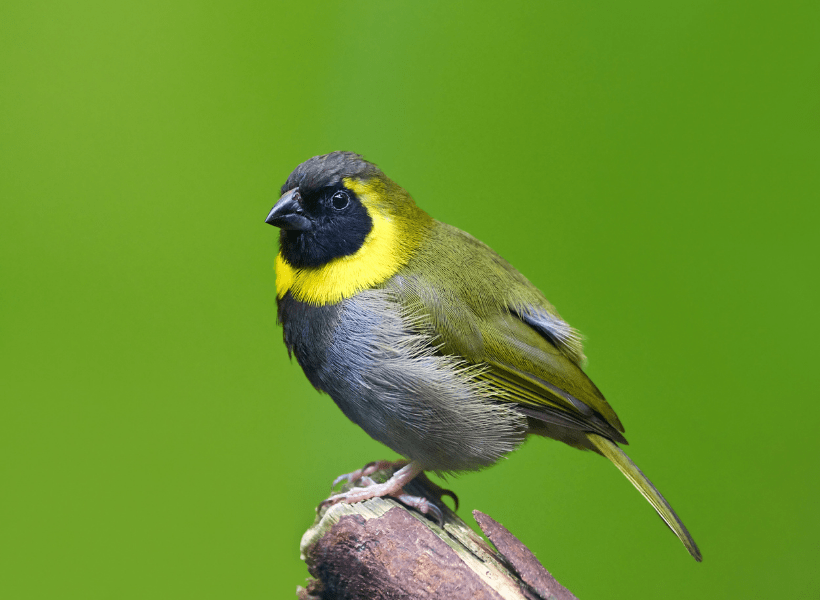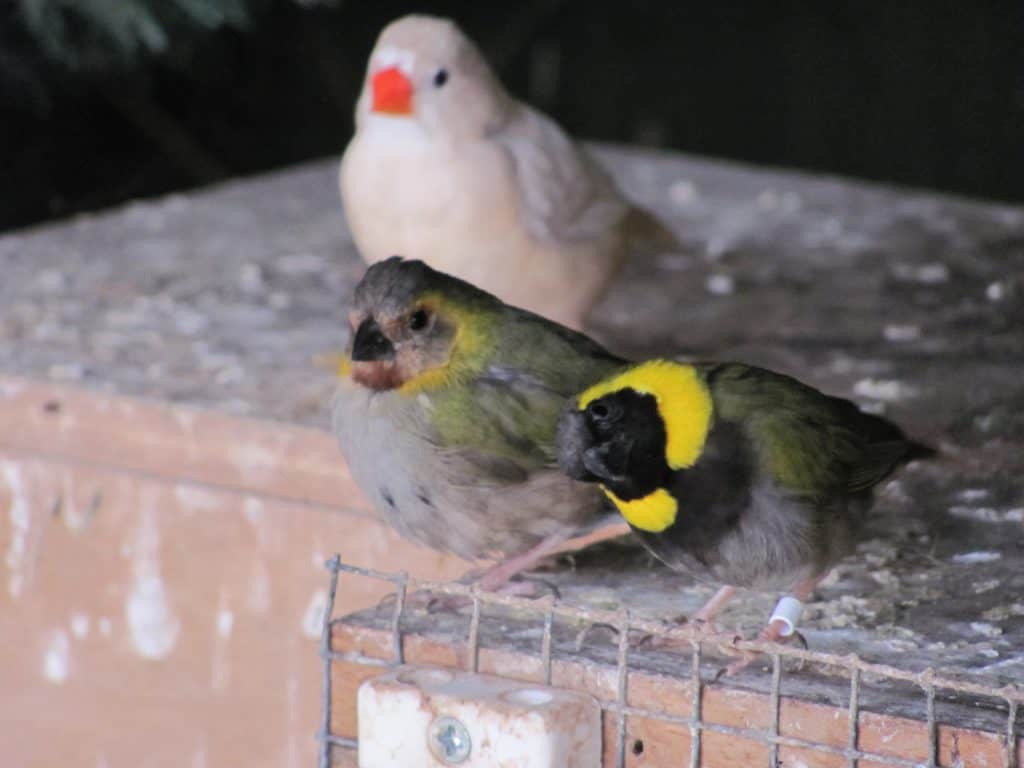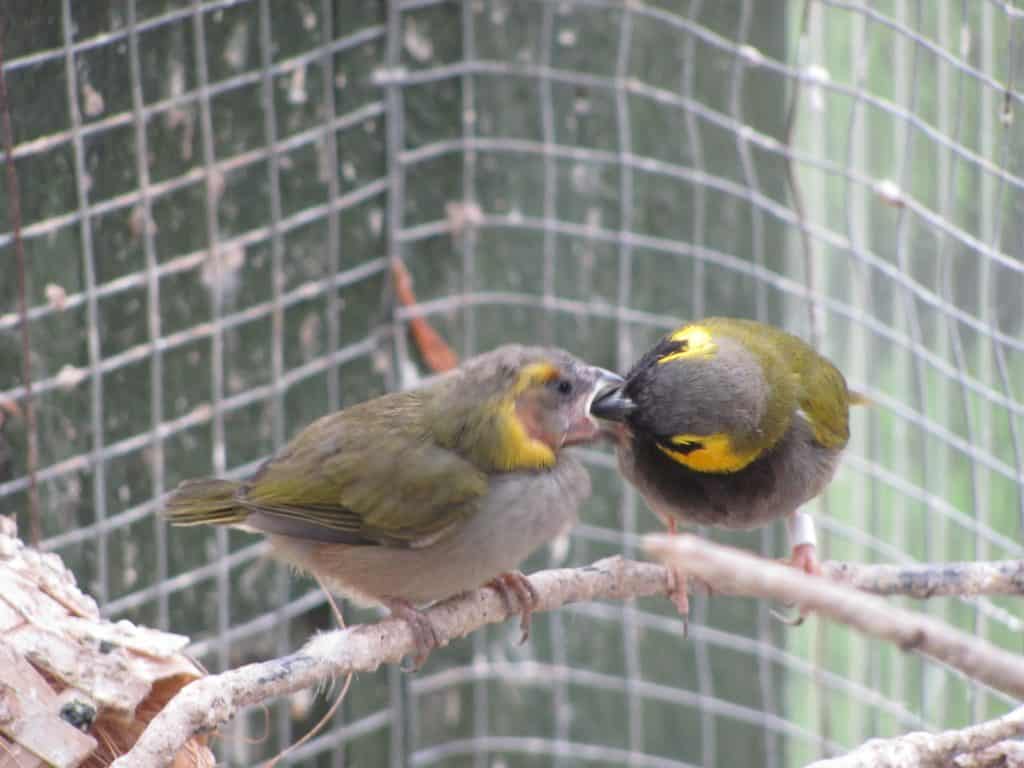When is a finch not a finch? When it is the Cuban Finch, properly known as the Cuban Grassquit. This attractive little bird has a huge character and is an active bird that is pleasant to keep with a few conditions to remember. But most importantly, it isn’t actually a finch but was formerly part of the Emberizidae family containing bird such as the Yellowhammer and is now classed as a tanager.
In the wild
The species is in the Coerebinae subfamily that includes species such as the bananaquit and the yellow faced grassquit. It is also the same subfamily as the Darwin’s finches, made famous by Charles Darwin. The Cuban grassquit now sits in it’s own family, Phonipara but was previously classed as a Tiaris species.

The Cuban grassquit is, as its name suggests, a bird of the island of Cuba as well as being seen sometimes in Florida, the Bahamas and the Turks and Caicos Islands. It is generally found in lowland and montane forest areas as well as dry shrub land and former forest areas. They like to live in grassland with trees and bushes as well as cultivated areas such as sugar cane plantations where the climate is hot and humid with plenty of rain.
In the wild, these birds live in small flocks for feeding and are often seen on the ground collecting seeds. The pairs then separate to breed where they build a nest around 1.5 metres high amid dense shrubs, bamboo and near to waterways. There is a low entrance to the nest and the main chamber slopes upwards.
These birds are very startling in their appearance. They have a black beak and face, chin and throat with yellow around the face and on the top of the throat. They have olive green back feathers and a black to dark grey bellow with tawny brown feet. Cuban grassquits are easy to sex because the female has much duller colours than the male. The birds are typically around 3.5 to 4 inches in length.
Keeping the Cuban grassquit
The Cubans have a bit of a reputation in an aviary as aggressive birds and it is deserved – you should only house one pair per area or they will fight and the fights can get pretty violent as they see others of the same species as territorial rivals.
It is said that you shouldn’t house them with other yellow and black plumage birds either but I’ve had them with canaries and even a senior yellowhammer at one time without any issues. They are definitely a bird best suited to an aviary flight or very large cage as they are extremely active.

In the wild, they eat a range of different seeds from the ground and will copy this behaviour in captivity. Good foreign finch mixes are a good place to start along with green foods, soaked seed and egg food. They don’t require live food to feed their young but will often eat things such as frozen pinkies and mealworms when available.
Breeding
It is best to wait until Cubans are at least one to two years old before breeding them. if the birds have been separated, then allow them to meet in a neutral cage or aviary area that neither of them has previously lived in. If they react well to each other with preening and sitting together, then this is a good sign. They form very strong bonds and stick together for life.
Courtship rituals at the start of breeding season are like many of the finch species and involves the male bird carrying a piece of grass or nesting material and chasing the hen, singing and head bobbing. The hen will accept by crouching and quivering her tail.
The pair will then build a nest and can use half open wood boxes, wicker nests or might build their own in any trees or bushes available. They like coconut fibre, grass and other plant fibres as well as feathers and soft materials such as jute and kapok to line the nest. Theirs is a somewhat messy dome nest when constructed, though my pair have recently fledged one chick from a small wicker nest.

The chicks hatch with grey-white down and hatch at around 11-13 days. They can be heard in the nest at around 10 days but avoid nest inspections as this can cause abandonment. I only knew that the chick was there when I was cleaning the bath and saw a little face peering out at me!
They fledge at around 13-15 days old and are weaned at around four weeks of age. They go through a juvenile moult at around eight weeks old at which time you can visually sex the chicks and should remove them from the area as the parent can see them as a threat.
Fiesty little characters
There’s no doubt that the Cubans are fiesty little characters that need a little careful management, especially when breeding. But they are interesting and active birds that make an aviary very active and their distintive colours make them easy to spot as they busy around the place.
Thank you for the info about the Cubans
Thanks Ray and glad the information is helpful!
I am looking to buy a pair of Plumb Heads and after reading your article on them I cant wait to find a pair.
Many Thanks Russell
5